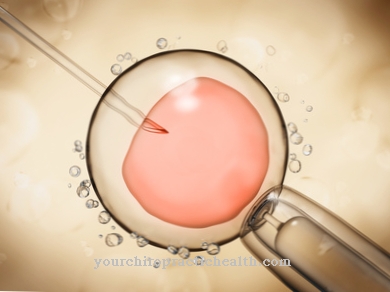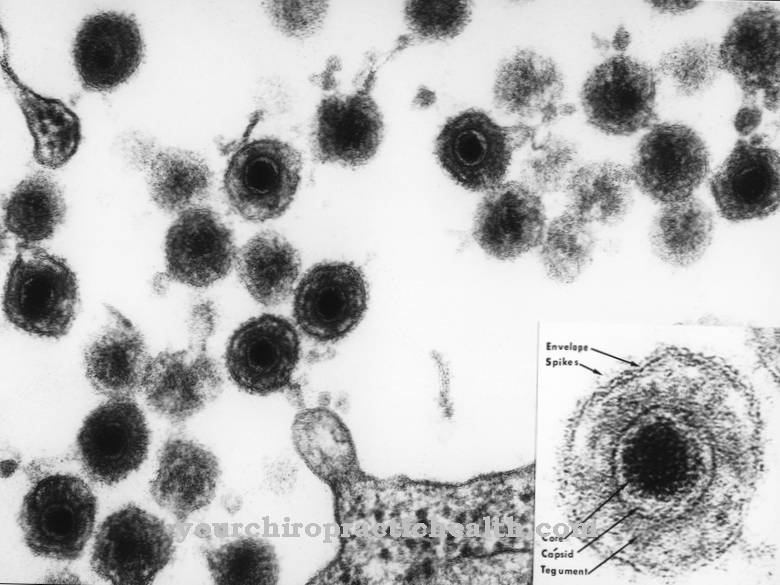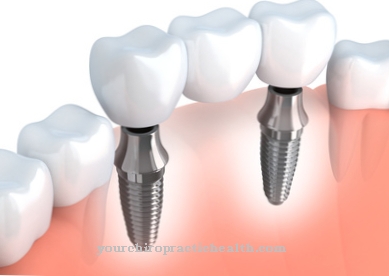A Colposcopy is the examination of the back wall of the cervix with a special device (colposcope). Abnormal cells are identified here, possibly a biopsy performed and, if necessary, treated immediately. The primary goal of a colposcopy is the early prevention of cervical cancer.
What is a colposcopy?

A Colposcopy usually follows an abnormal cervical swab or similar examination. Colposcopy involves a detailed examination of the cervix with a special device (colposcope).
This allows the doctor or the trained nurse to determine the degree of abnormal cell formation. For this, the walls of the cervix are usually moistened with a special liquid. The cells then react. A biopsy may be performed during the examination.
This means that a small sample of the tissue is removed for further analysis. In some cases, if the cause of the abnormality is immediately apparent, treatment can be started during the colposcopy.
Function, effect & goals
The doctor's recommendation one Colposcopy Doing this, which usually follows an unusual swab test, is not, however, a cause for concern. Unusual test results are quite common and there can be many reasons.
Results may differ from normal if there was too much blood or mucus in the area for testing. The human papillomavirus passed on through sex is also a common cause. Most cervical cancer cases are related to this virus. In 9 out of 10 cases, however, the virus completely regresses from the body within two years.
The average colposcopy takes about half an hour, but it can also take longer. One hour should therefore be included. The doctor or nurse will begin by asking a series of questions, most of which relate to details of your period, birth control, and general health. Then, as in a normal examination, the speculum is introduced. The colposcope enables a closer look into the cervix.
The colposcope itself is not inserted into the vagina. It resembles large binoculars with strong lights and, in some cases, some video cameras. A liquid is applied with a long swab to identify the abnormal cells. Possibly. a small piece of tissue is removed for analysis. This can be uncomfortable and a local anesthetic is used. After the colposcopy, bleeding and the excretion of a blue-green liquid may continue for a few days.
The main purpose of colposcopy is the prevention of cervical cancer.If colposcopy reveals abnormal cell development at an early stage, treatment can prevent further abnormal development. Cancer does not exist at this point, but if left untreated, an abnormality can develop into cancer over time.
If the examination reveals only a mild change, no treatment may be carried out and a next appointment for a check-up will be arranged. If treatment is needed, it will involve removing or destroying the abnormal cells through various procedures (removal, laser, heat, cold).
Risks & dangers
The Colposcopy is usually a very safe procedure. Some women may find the treatment a little uncomfortable. Complications are very rare during treatment. These include profuse bleeding or infection.
If there is heavy bleeding or an unpleasant odor after the colposcopy, the doctor should be consulted again as soon as possible. Risks and side effects that may arise from treatment are usually set out on a letter that the patient receives for signature.
A detailed reading is necessary and possible counter questions in the event of a lack of understanding. After the colposcopy, the patient should follow a number of rules to avoid complications. These are also given in writing. They mostly include: no sex for a period of time; no tampons; no heavy lifting; no baths for at least 24 hours.












.jpg)
.jpg)







.jpg)


.jpg)



